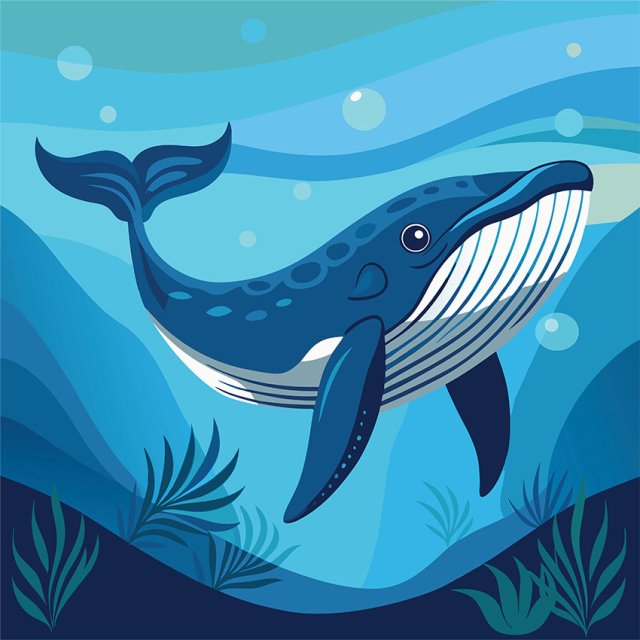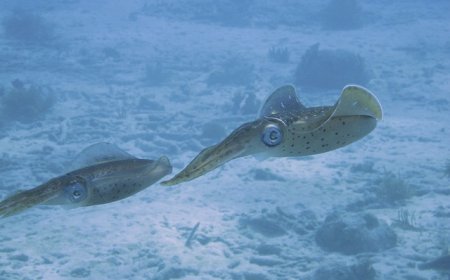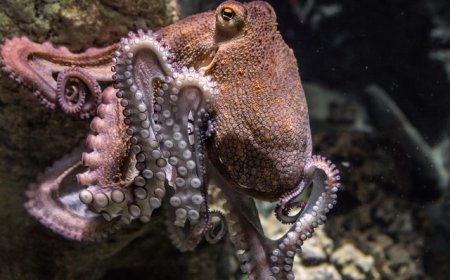All About Whales for Students: Giants of the Ocean
Explore the world of whales in this student-friendly guide for ages. Learn how whales breathe, sing, dive, migrate, and survive in the deep sea. Includes fun facts, vocabulary, and a quiz!

🐋 Whales: Giants of the Ocean
📚 Scientific Name and Classification
-
Common Name: Whale
-
Scientific Group: Cetacea (includes whales, dolphins, and porpoises)
-
Two main types:
-
Baleen whales (Mysticeti): e.g., Blue whale, Humpback whale, Gray whale
-
Toothed whales (Odontoceti): e.g., Sperm whale, Orca (killer whale), Beluga whale
-
Whales are marine mammals, meaning they live in the ocean but breathe air, give birth to live young, and produce milk. They are warm-blooded and must come to the surface to breathe through blowholes.
🌊 Habitat and Geographic Range
Whales live in all of the world’s oceans—from warm tropical waters to icy polar seas. Different species prefer different environments:
-
Blue whales roam deep open oceans
-
Beluga whales live in cold Arctic seas
-
Gray whales migrate along coastlines
-
Humpbacks are found near coral reefs and fjords
Whales are highly migratory, meaning they travel long distances. Some migrate over 10,000 miles each year between feeding and breeding grounds!
🍴 Diet and Feeding Habits
Baleen Whales:
-
Have baleen plates (comb-like filters) instead of teeth
-
Eat tiny animals like krill, plankton, and small fish
-
Use techniques like:
-
Lunge feeding: gulping large amounts of water and filtering out food
-
Bubble net feeding (humpbacks): making bubble “nets” to trap fish
-
Toothed Whales:
-
Have teeth and hunt larger prey
-
Eat squid, fish, and sometimes other marine mammals
-
Use echolocation (sound waves) to find food in dark waters
💡 The sperm whale can dive more than 3,000 feet to hunt giant squid!
🧠 Behavior and Intelligence
Whales are incredibly intelligent, social, and emotional.
-
Many whales live in pods—family groups that travel, feed, and protect each other
-
They communicate with clicks, whistles, and songs
-
Humpback whales sing long, beautiful songs to attract mates
-
Sperm whales use clicking sounds to “talk” across miles
-
-
Whales recognize each other, solve problems, and care for sick or injured pod members
Whales even grieve their dead, showing signs of complex emotions.
🦴 Physical Features and Unique Adaptations
-
Size:
-
Blue whale: up to 100 feet long and 200,000 pounds—the largest animal ever on Earth!
-
Belugas and dolphins: much smaller
-
-
Blowhole(s):
-
Baleen whales: 2 blowholes
-
Toothed whales: 1 blowhole
-
-
Blubber: A thick fat layer under the skin that provides insulation and energy
-
Flukes (tail fins): Used for powerful swimming
-
Flippers: Help steer and balance
-
Eyesight and hearing: Excellent underwater hearing; some can even see well in low light
Whales can hold their breath for 20 minutes to over an hour, depending on the species.
🍼 Life Cycle and Reproduction
-
Mating: Usually in warm waters
-
Gestation: 10–17 months, depending on the species
-
Birth: Usually one calf
-
Size at birth:
-
Blue whale calf: 20–25 feet long
-
Nurse from mother’s milk (rich in fat) for 6 months to 2 years
-
-
Lifespan:
-
Blue whale: up to 90 years
-
Bowhead whale: may live over 200 years!
-
Calves stay close to their mothers for protection, learning migration routes and social behavior.
⚠️ Threats and Conservation
Whales were once hunted nearly to extinction for their oil, meat, and baleen. Today, they face new threats:
Main dangers:
-
Ship strikes
-
Fishing gear entanglement
-
Noise pollution (from ships and sonar)
-
Plastic and pollution
-
Climate change affecting food sources
Conservation efforts:
-
International whale sanctuaries
-
Whaling bans (like the IWC Moratorium)
-
Protected migration zones
-
Stricter shipping lane laws
Thanks to these efforts, some whale species like the humpback are making a comeback—but others are still critically endangered.
🎉 Fun Facts About Whales
-
Blue whales have hearts the size of small cars
-
A sperm whale’s click is the loudest sound made by any animal
-
Beluga whales are called “canaries of the sea” because of their singing
-
Whales sleep with one half of their brain awake so they can keep breathing
-
Some whales can hold their breath for over an hour
🧠 Vocabulary List
-
Blowhole – The nose opening on top of a whale’s head used for breathing
-
Baleen – Hair-like plates used to filter food from water
-
Echolocation – Using sound to locate objects underwater
-
Pod – A social group of whales
-
Blubber – A thick layer of fat that insulates and stores energy
-
Krill – Tiny shrimp-like animals eaten by baleen whales
-
Cetacean – A group of marine mammals that includes whales, dolphins, and porpoises
-
Migration – Long-distance travel to new feeding or breeding areas
-
Sanctuary – A safe place where animals are protected
-
Entanglement – Getting caught in fishing nets or lines



















































